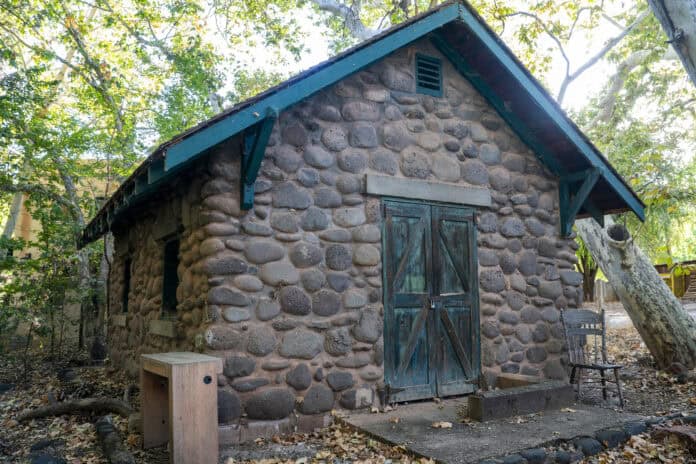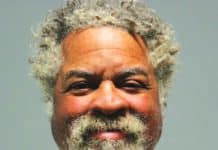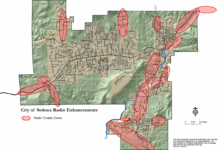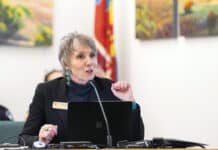
The Sedona City Council agreed on Oct. 8 to preserve the Historic Preservation Commission at least through next year, following a discussion requested by Vice Mayor Holli Ploog.
“We’ve had a lot of difficulty filling spots on the commission,” Ploog said. “It seemed to me to be a good time to assess what we should do.”
Council reduced the number of seats on the HPC from seven to five in 2023. Commissioner Bob Huggins’ term expired on Feb. 9, but he agreed to stay on temporarily, while Chairwoman Brynn Unger resigned on June 26. Sedona Historical Society Executive Director Nate Meyers is currently serving as interim chairman.
“The question always was, what did the commission do?” outgoing Councilwoman Jessica Williamson wondered. “What do you think the role of the Historic Preservation is or could be … and do we really need a commission?”
“That was discussed in previous meetings,” Community Development Director Steve Mertes said, and explained that the commission’s role is set out in and required by the city’s Land Development Code. “To landmark a property, yes, it has to be by the commission or another public body.”
Mertes also described the existing historic property survey as “greatly outdated.”
“The number of reasons to meet has gone up in the last two years,” Mertes said.
“Part of this conversation came up because — I don’t want to say that the commission wasn’t doing its job for a long stretch of time, there are reasons for that … but it was 10 or 11 years between landmarking properties,” Meyers said. “Just this past May we got back to landmarking properties, where we landmarked the Kiva House and we landmarked the chapel at Tlaquepaque. There is a historical survey that was done in 2014, a historic resource survey, that needs to be updated, so that we can have a written record and documentation of the buildings which have hit the baseline qualification of 50 years old even to be considered for historic preservation.”
“What the commission has been working on in our last couple of meetings is developing a work plan to ensure that we don’t one of those dry patches again where we go so long without doing our primary mandate,” Meyers continued. The HPC is also working on education efforts, such as creating a driving tour for local landmarks. “There’s really fun ways we can get this information out to people in a way that they’ll actually use it,” Meyers said.
City Manager Anette Spickard noted that the city has a service provider contract with SHS “to perform certain functions of what would traditionally be something for the HPC,” which will expire in 2026.
“My recommendation as the city manager is that we work with the HPC through 2025, until the point that we’re ready to renegotiate the museum contract, and talk about changes to that contract at that time,” Spickard said.
Councilman Pete Furman enquired whether the HPC’s procedures or agreement with SHS needed to be reviewed.
“I don’t perceive that as a need at the moment,” Meyers said. “The negotiation for the provider contract offers the right time to do that.”
Ploog expressed her agreement with Spickard’s proposed compromise strategy, “which is to give Nate … and give the commission a chance under new leadership, with new commissioners, to prove that they should exist. The idea that the contract is up for renewal next year gives us a placeholder, gives us a target date … see if they agree that they have work that should be done and make that decision at that time.”
“The pendulum is swinging back to the mode of engagement of the commission and I do think that is a good thing,” Furman said.
“Having an active commission will make recruitment easier,” Meyers agreed.
“What I see is an upswing of vision and results … and I think that would be a wrong time to try to have a conversation about changing the model,” Councilwoman Kathy Kinsella said. “The proposition to evaluate in a year makes a lot of sense.”
Planning and Zoning Commission Chairwoman Kathy Levin, who also serves on the SHS board, told the council that the existing historic property survey already contains “a listing of properties that could be eligible to be landmarked. There is a work plan already embedded in the historic resource survey — which would need to be updated.”
“I was thinking of some of the really exciting properties that would behoove use to engage the property owners,” Levin continued. “One was the Max Ernst house and two were Babbitt properties on the creek … In my own neighborhood, there’s this lovely family with one darling little child. They are documenting the history of their home because Cynthia Bennett, who was married to Frank McCarthy … [who] was part of the Cowboy Club of America legacy meeting Uptown, at whatever it was that had the polar bear in it … Right around the corner from me is a home that speaks to one of the more important periods of our community, and that’s when we started seeing eccentric people come.”
The Cowboy Artists of America organizationn was founded on June 23, 1965, at the Oak Creek Tavern, which is now the Cowboy Club in Uptown. McCarthy joined the organization in 1975.
“With a change in leadership, and some outstanding applications for the commission, I think it’s going to be a very busy year,” Levin finished.
Council subsequently directed city staff to move forward with setting up interviews with the applicants seeking to fill the open seats on the commission. As of Oct. 8, Bobby Woods, Karen Stupak and Thomas Weis had applied for the two available seats.





















